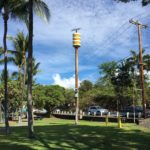The Hawai‘i Emergency Management Agency (HI-EMA) consulted with leaders of the State’s emergency management partners in each county to produce a summary for major hazards in Hawaiʻi following the Maui wildfire.
The attached summary covers elements such as which organizations have primary and secondary responsibility for activating alert systems, and factors to consider in making the decision.
In a press release James Barros, HI-EMA Administrator said, “These protocols haven’t changed. The sirens are an all-hazard alert system, and the state and county emergency plans address how to use all our alert and warning tools. This summary collects information about many different hazards and puts it on one page to help ensure the public has a clear understanding of how these complex decisions are made, sometimes in a very short amount of time.”
Elements covered in the summary include:
- Who informs emergency managers about a hazard to the public
- What information is typically weighed in deciding whether to activate sirens or other alerts
- Who typically makes the decision on siren activation
- Who is responsible for activating sirens (primary and secondary)
- Where sirens typically would be activated for specific hazards
- What other alert systems may be used instead of or along with sirens
The summary also shows the diverse factors that go into decision-making about siren use, from the location of the hazard to whether it will begin to impact the public in daylight or darkness.
“We’re always looking to improve our response to emergencies, and the review of the Maui fire response may lead to changes, but for now it’s important that Hawai‘i’s residents know that the sirens are an alert system that means ‘seek more information,’” Barros said.
HI-EMA canceled this month’s siren system test, however it will resume on Monday, October 2. A separate nationwide test of alert systems for radio/television and mobile devices will also take place in early October.
